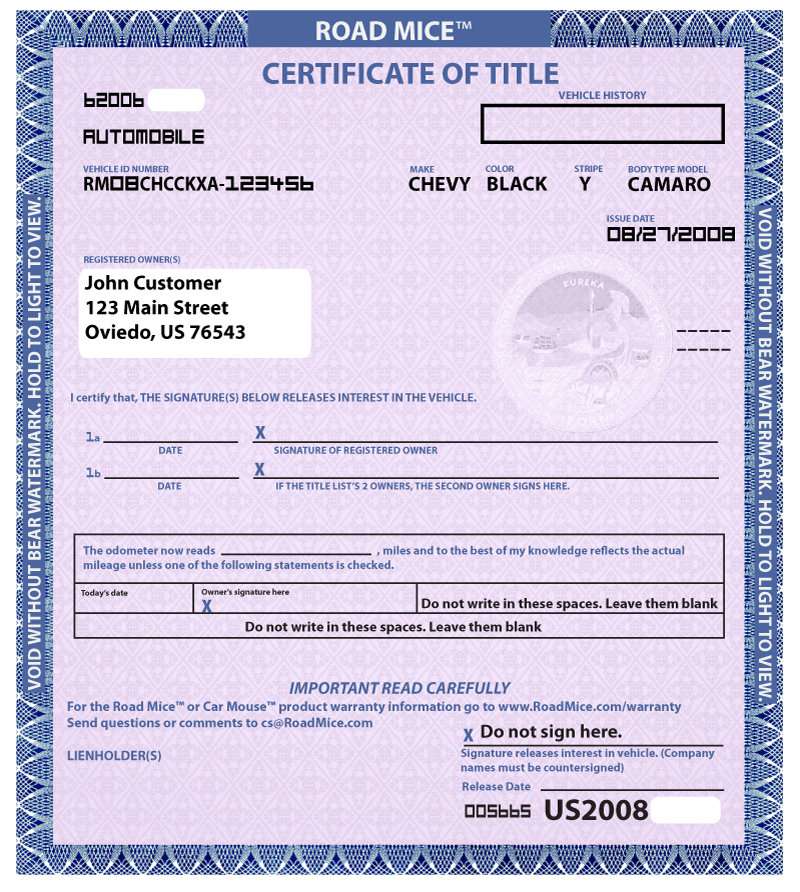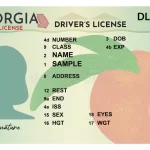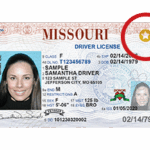Online Title Transfer: A Comprehensive Guide to Streamlining Vehicle Ownership

Buying or selling a vehicle is a common life event, but the process of transferring ownership can often feel like navigating a complex maze of paperwork, bureaucratic hurdles, and potentially lengthy wait times. Traditionally, this involved physical visits to the DMV, filling out forms, and enduring the often-dreaded queue. However, with the advent of online services, many states now offer the convenience of online title transfer, simplifying and expediting the process significantly.
This comprehensive guide will delve into the world of online title transfers, providing you with a thorough understanding of the process, its benefits, eligibility requirements, necessary documentation, state-specific regulations, potential pitfalls, and best practices for ensuring a smooth and efficient transfer.
Why Consider Online Title Transfer? The Advantages are Clear.
Before diving into the details, let’s explore the compelling reasons why opting for online title transfer is often the superior choice:
- Convenience and Time Savings: The most obvious advantage is the elimination of travel time and lengthy waits at the DMV. You can initiate and, in some states, complete the entire title transfer process from the comfort of your home or office, at your own pace.
- Reduced Paperwork: Online systems often streamline the application process by guiding you through the required fields and reducing the need for physical forms. This not only saves paper but also minimizes the risk of errors due to messy handwriting or incomplete information.
- Faster Processing Times: Online applications are typically processed more quickly than traditional paper-based submissions. This is because the data is entered directly into the system, reducing the potential for manual errors and delays.
- Transparency and Tracking: Many online systems provide real-time tracking of your application, allowing you to monitor its progress and anticipate when your new title will be issued.
- Cost Savings: While there might be a small service fee associated with online title transfer in some states, it can often offset the costs associated with travel, time off work, and potential errors leading to rejections.
- Enhanced Security: Online systems often incorporate security measures like encryption and secure payment gateways to protect your sensitive information during the transfer process.
Is Online Title Transfer Right for You? Understanding Eligibility Requirements.
While online title transfer offers numerous benefits, it’s not universally available or applicable to all situations. Eligibility requirements vary from state to state, but some common criteria often apply:
- State Availability: The most basic requirement is that your state must offer online title transfer services. Not all states have implemented this option yet, so it’s crucial to check with your local DMV or Department of Motor Vehicles website.
- Vehicle Type: Typically, online title transfer is limited to certain types of vehicles, such as passenger cars, motorcycles, and light trucks. Commercial vehicles, trailers, and boats may have different requirements.
- Title Status: The vehicle’s title must be clear and free of any liens or encumbrances. If there’s an existing lienholder, you’ll need to obtain a lien release before proceeding with the online transfer.
- Residency Requirements: Both the buyer and seller may need to be residents of the state where the online title transfer is being conducted.
- Odometer Disclosure: Accurate odometer readings are essential. Online systems often require you to enter the current mileage of the vehicle.
- Valid Driver’s License/Identification: You’ll typically need a valid driver’s license or other acceptable form of identification to verify your identity.
- Internet Access and Technological Proficiency: A stable internet connection and basic computer skills are necessary to navigate the online application process.
- Specific Transaction Types: Some states may only allow online title transfers for specific transaction types, such as private party sales between individuals. Dealers may have different requirements.
Gathering Your Documents: A Checklist for a Successful Transfer.
Having the right documents readily available is crucial for a smooth online title transfer. Here’s a general checklist of documents you’ll likely need:
- Original Vehicle Title: This is the most important document. Make sure it’s the original title and not a copy. Carefully review it for any errors or discrepancies.
- Bill of Sale: This document outlines the terms of the sale, including the purchase price, date of sale, and names and addresses of the buyer and seller. Some states provide a specific form for this purpose.
- Odometer Disclosure Statement: As mentioned earlier, you’ll need to accurately report the vehicle’s mileage. Some states include an odometer disclosure section on the title itself, while others require a separate form.
- Proof of Insurance: Most states require you to provide proof of insurance before transferring ownership. Make sure your insurance policy meets the minimum liability coverage requirements in your state.
- Valid Driver’s License or Identification: You’ll need to provide a copy or scan of your driver’s license or other acceptable form of identification.
- Payment Method: Be prepared to pay any applicable transfer fees, taxes, and registration fees online. Most online systems accept credit cards, debit cards, or electronic checks.
- Lien Release (If Applicable): If the vehicle has a lien, you’ll need to provide a lien release from the lienholder. This document confirms that the loan has been paid off and the lien has been removed.
- Power of Attorney (If Applicable): If you’re acting on behalf of someone else, you’ll need to provide a valid power of attorney document.
- Smog Certificate (If Applicable): Depending on your state and the age of the vehicle, you may need to provide a smog certificate to demonstrate that the vehicle meets emission standards.
Navigating the Online Title Transfer Process: A Step-by-Step Guide.
While the specific steps may vary slightly depending on your state’s online system, here’s a general overview of the online title transfer process:
- Access the DMV Website: Start by visiting your state’s DMV or Department of Motor Vehicles website. Look for a section related to online title transfers or vehicle services.
- Check Eligibility: Before proceeding, carefully review the eligibility requirements to ensure that you meet all the criteria.
- Create an Account (If Required): Some online systems require you to create an account before you can initiate a title transfer. This may involve providing your personal information and creating a username and password.
- Start the Application: Once you’re logged in (if required), find the option to start a new title transfer application.
- Enter Vehicle Information: You’ll need to provide detailed information about the vehicle, including its VIN (Vehicle Identification Number), year, make, model, and license plate number.
- Enter Buyer and Seller Information: You’ll need to provide the names, addresses, and driver’s license information (or other identifying information) for both the buyer and the seller.
- Enter Odometer Reading: Accurately enter the current odometer reading of the vehicle.
- Upload Documents: You’ll likely need to upload scanned copies or photos of the required documents, such as the original title, bill of sale, and proof of insurance. Ensure the documents are clear and legible.
- Review and Submit: Carefully review all the information you’ve entered to ensure its accuracy. Once you’re satisfied, apply.
- Pay Fees: You’ll be prompted to pay any applicable transfer fees, taxes, and registration fees online.
- Confirmation and Tracking: After submitting your application and paying the fees, you should receive a confirmation email or notification. You may also be able to track the progress of your application online.
- Receive the New Title: Once the application is processed, you’ll typically receive the new title in the mail. The processing time can vary depending on your state.
State-Specific Regulations: Knowing the Rules of the Road.
It’s crucial to remember that online title transfer regulations vary significantly from state to state. Some states may offer a fully online process, while others may only allow you to initiate the process online and require you to complete certain steps in person. Here are some examples of how state rules might differ:
- Availability: As mentioned before, not all states offer online title transfer.
- Eligibility Criteria: The specific eligibility requirements for online title transfer can vary. For example, some states may impose stricter residency requirements.
- Document Requirements: The required documents can vary depending on the state. Some states may require additional forms or certifications.
- Fee Structures: The fees associated with title transfer, taxes, and registration can differ significantly between states.
- Processing Times: The time it takes to process an online title transfer can vary depending on the state and the volume of applications being processed.
- Online System Features: The features and functionalities of the online title transfer system can vary. Some systems may offer more advanced features, such as real-time chat support or document verification.
- Inspection Requirements: Some states require a vehicle inspection before a title can be transferred. Verify if this needs to be done before initiating an online title transfer.
To find the specific regulations for your state, visit your state’s DMV or Department of Motor Vehicles website. Look for information on online title transfers or vehicle services.
Potential Pitfalls and How to Avoid Them.
While online title transfer offers numerous advantages, it’s not without its potential pitfalls. Here are some common issues to be aware of and how to avoid them:
- Incomplete or Inaccurate Information: Errors in the application can lead to delays or rejections. Solution: Carefully review all the information you enter before submitting it. Double-check the VIN, odometer reading, and personal information for accuracy.
- Missing Documents: Failing to provide all the required documents can also lead to delays or rejections. Solution: Before starting the application, make a checklist of all the required documents and gather them in advance.
- Title Discrepancies: Errors or discrepancies in the original title can cause problems. Solution: Carefully inspect the title for any errors or alterations. If you find any, contact your local DMV for guidance.
- Technical Difficulties: Technical issues with the online system can sometimes occur. Solution: Ensure you have a stable internet connection and a compatible web browser. If you encounter technical difficulties, try clearing your browser’s cache and cookies or contacting the DMV’s technical support.
- Fraudulent Transactions: Be cautious of potential scams when buying or selling vehicles online. Solution: Always verify the identity of the buyer or seller before proceeding with the transaction. Use secure payment methods and avoid wiring money to unknown individuals.
- Lien Issues: Unresolved liens can prevent the title from being transferred. Solution: Ensure that any existing liens on the vehicle have been properly released before initiating the title transfer.
- Smog Issues: Failing to meet smog requirements can delay or prevent title transfer. Solution: Obtain a smog certificate (if required) before initiating the transfer.
Best Practices for a Smooth and Efficient Transfer.
To ensure a smooth and efficient online title transfer, follow these best practices:
- Research Your State’s Requirements: Before you start the process, thoroughly research your state’s specific requirements, eligibility criteria, and document requirements.
- Gather All Necessary Documents: Collect all the required documents in advance and ensure they are clear, legible, and accurate.
- Double-Check Your Information: Carefully review all the information you enter into the online application for accuracy.
- Use a Secure Internet Connection: When entering sensitive information, use a secure internet connection to protect your privacy.
- Keep a Record of Your Transaction: Save a copy of your application, confirmation email, and receipt for your records.
- Track Your Application: Use the online tracking system to monitor the progress of your application.
- Contact the DMV if needed: If you have any questions or encounter any problems during the process, don’t hesitate to contact your local DMV for assistance.
- Be Patient: Processing times can vary, so be patient while your application is being reviewed.
The Future of Title Transfers: Embracing Digital Efficiency.
Online title transfer represents a significant step towards streamlining and modernizing the process of vehicle ownership. As technology continues to evolve, we can expect to see even more advancements in this area, such as:
- Increased Availability: More states are expected to adopt online title transfer services in the future.
- Enhanced Security Features: Online systems will likely incorporate even more robust security measures to protect against fraud and identity theft.
- Integration with Other Services: Online title transfer may be integrated with other related services, such as vehicle registration renewals and driver’s license updates.
- Mobile Applications: Mobile apps may be developed to further simplify the online title transfer process.
- Blockchain Technology: Blockchain technology could be used to create a more secure and transparent system for tracking vehicle ownership.
Conclusion: Embracing the Convenience of Online Title Transfer.
Online title transfer offers a convenient, efficient, and often cost-effective alternative to traditional paper-based methods. By understanding the process, eligibility requirements, necessary documentation, state-specific regulations, and potential pitfalls, you can navigate the online title transfer process with confidence and ensure a smooth and successful transfer of vehicle ownership. As more states embrace digital solutions, online title transfer is poised to become the standard for vehicle ownership transfers, making the process easier and more accessible for everyone. Remember to always check with your local DMV for the most up-to-date information and regulations pertaining to online title transfers in your state.














